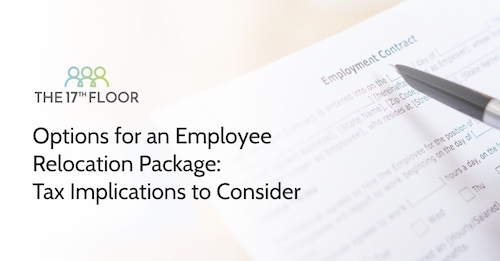Employee Relocation Beyond Canada: 9 Steps to Success for HR and Payroll Professionals

The need for international talent mobility is rising as the world becomes more interconnected. Businesses are increasingly expanding their operations across international boundaries, often requiring employees to relocate to foreign countries.
For Canadian HR and payroll managers, overseeing the process of employees relocating to the United States or other countries can be a complex endeavour. Continue reading for valuable insights and considerations to ensure a seamless transition for both the company and its relocating employees.
Understanding the Scope of International Relocation
International employee relocation involves more than just a change of location; it encompasses cultural, legal, logistical, and personal adjustments.
Companies will relocate to different locations across the globe for various reasons, including taxes, cheaper labour, better access to capital, access to better talent, and taking advantage of new opportunities. Global relocation does differ from domestic relocation in many ways, such as the expense laws, but particularly in its scope.
9-Step Checklist for a Streamlined Employee Relocation Process
1. Assessment and Eligibility
Begin by assessing the employee’s eligibility for international relocation. Consider factors such as the employee’s role, skills, and suitability for the new location.
2. Legal and Immigration Compliance
Ensure compliance with immigration laws and regulations of the host country. This may involve obtaining work visas, residence permits and understanding the tax implications of the relocation. Working with legal experts is recommended to ensure compliance with immigration laws and regulations in the destination country.
3. Cultural Awareness
Prepare employees for cultural differences and nuances in the host country. Cross-cultural training can mitigate misunderstandings and promote effective communication. This can foster a smoother transition and enhance productivity.
4. Cost of Living and Compensation
Research and analyze the cost of living in the new location. Adjust compensation packages accordingly to maintain the employees’ standard of living and ensure their motivation and productivity remain unaffected. Review currency exchange rates in the new location and ensure that benefits such as retirement plans remain effective.
5. Healthcare and Insurance
Understand the host country’s healthcare system and provide guidance on obtaining adequate health insurance coverage. Canadian employees might be accustomed to a different healthcare model, so clear information is crucial.
6. Payroll Compliance and Tax Implications
Establish a straightforward international payroll process that adheres to both countries’ legal and regulatory requirements. Consider factors such as payroll frequency, method of payment, and social security contributions.
In addition, international employee relocation can have significant tax implications. Collaborate with tax experts to navigate the complexities of dual taxation and ensure compliance with both Canadian and foreign tax laws.
7. Logistics and Moving Assistance
Provide comprehensive support for the employee and their family. Coordinate logistics for the move, including finding housing, transportation, and assistance with the physical move. A relocation package can significantly aid employees during this transition.
8. Dual-Career Couples
If an employee’s partner also has a career, explore options for their professional growth in the host country. A successful dual-career arrangement can significantly enhance an employee’s satisfaction and long-term commitment.
9. Ongoing Support
Maintain open lines of communication with the relocated employee. Regularly assess their well-being, address any challenges, and provide the necessary support.
Have you ever had to coordinate the transfer of an employee to the US or another country? Tell us about your experience and the challenges you have met.
Sources:


